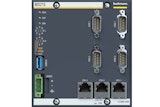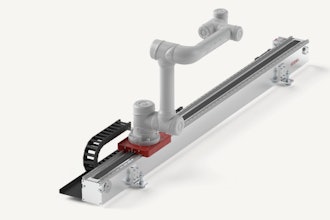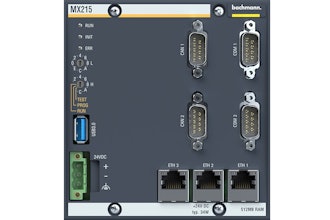Efficiency is crucial in most business operations and, in particular, manufacturing. Like judges in a footrace, consumers usually only care about the result of a production “run”—the product itself. They don’t want to know how many working hours it took to assemble it; they could care less about how long it takes to move components across the factory floor. Their sole interest is getting the product they want at an acceptable price point and within a reasonable time frame.
Lean manufacturing is the industry’s equivalent to a runner optimizing his form. Toyota process guru Shigeo Shingo initially developed the philosophy as a means of eliminating the costs posed by human error and inefficiency. Today, it commonly refers to any system that manages to minimize waste without sacrificing productivity. A “lean” operation continually seeks to refine its process without being afraid to scrap inefficient processes or roll out better-optimized procedures—even if those changes seem minuscule at first glance.
As business researcher and author Michael Schrage points out in an article for Harvard Business Review, Shingo’s ideas about lean manufacturing hung heavily on his attention to detail. Shrage writes, “Shingo looked for the simplest, cheapest, and surest way to eliminate foreseeable process errors. To make sure an assembler uses three screws, for example, package the screws in groups of three. Obvious? Perhaps. But “obvious” is often an underutilized and underappreciated asset.”
Let’s consider a real-world example.
Several years ago, I had the opportunity to tour a Panasonic refrigerator factory that had made “lean” thinking a central focus of its operations for over a decade. The work showed; that operation was one of the most efficient I had seen in my time working in the industry.
Here’s how it worked—rather than maintain a unique line for each variety of refrigerator, Panasonic created a manufacturing process that facilitated mix-model production on a single conveyor. This approach might not have worked if each product had to be painstakingly crafted according to model; however, Panasonic could maintain a single-stream process because they had developed a series of processes that allowed for mix model production. One example is the dies used stamp out frames and doors were designed to be exchanged in less than thirty seconds, rather than the hours the same task would have demanded in a more traditional manufacturing environment. Each of the dies weighed tens of thousands of pounds and were likely challenging to integrate into the manufacturing operation, but having them increased operational flexibility for the manufacturer.
With the dies system in place, Panasonic workers could churn out products as-needed with relative ease. When I visited, I saw traditional upright models built alongside others with drawers, ice makers, and even high-capability electronics. Both the flexibility and the thought that went into creating the diverse lineup were impressive -- the company’s developers Poka-yoked (error-proffed) the manufacturing process, designing the electronics with model-specific indicators so that the production line operator would know which board to put into which model. As a result, the manufacturers could build a custom refrigerator quickly and cost-effectively. The flexibility and quick turnaround allowed the manufacturer to give their customers the products they wanted when they wanted it—and entirely removed the need for long waiting times, costly preemptive production runs, or tying up cash in inventory.
The benefits of lean manufacturing are intuitive. Manufacturers can save money during production, make better use of their workers’ time, and increase their capacity. The research on the potential for financial gain from “lean” thinking is limited, but it does offer some positive findings. In 2008, analysts partnered with Boeing to assess how lean manufacturing impacted the company’s productivity on select projects. They found that lean initiatives led to a 28 percent reduction in labor cost, 60 percent of anomaly-caused time losses, 45 percent reduction in cycle time, and a 24 percent reduction in non-conformances. While these statistics are from a limited sample pool and don’t stand as hard-and-fast benchmarks, they do indicate a potential for savings and gains.
If properly executed and implemented, lean manufacturing will not only improve the efficiency, effectiveness, and profitability of the work done on a factory floor but also transform the whole of a business and its processes. However, the process requires more than fixing a few glaring inefficiencies—in many cases, it requires manufacturers to reorganize their approach around the five principles of lean manufacturing.
Value
Before manufacturers can become “lean,” they need to develop a better sense of what their customers value. Typically, this requires some research into industry-established price points, expected quality, and typical turnaround times. Doing so will establish a few parameters for the company to use to develop productivity goals.
Value Stream
After the manufacturer has established their value parameters, they need to address the production process itself and identify any aspects that fail to create value. Rooting out these time-wasting steps will both allow for greater efficiency and provide the manufacturer with a more comprehensive understanding of the production process.
Flow
All of the time-saving changes in the world won’t make a difference if a production line lacks flow. If one area of production is hyper-efficient and the next slow, the line will inevitably form a bottleneck at the point of conflict. It’s crucial that manufacturers implement time-saving changes so that the overall flow of production remains stable.
Pull
Developing pull requires manufacturers to improve their time to market benchmarks so that customers don’t have to suffer through extensive waiting periods. Having good “pull” isn’t only a plus for the consumer, however—short turnarounds empower manufacturers to produce on an as-needed basis, and thereby save them from the expense of accumulating a preemptive stockpile of products.
Perfection
There is never an endpoint for improvement. Being “lean” is a mindset, rather than a task; as such, these thinkers strive for greater efficiency even after they implement massive innovations. Perfection may not exist—but lean manufacturers will continue to reach for it.
Robert Logemann is CEO of the Tyden Group.























